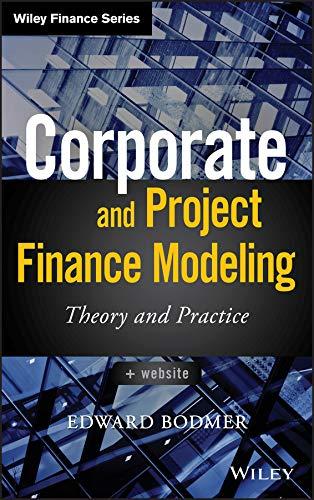Question
BioCom, Inc. is weighing a proposal to manufacture and market a fiber-optic device that will continuously monitor blood pressure during cardiovascular surgery and other medical
BioCom, Inc. is weighing a proposal to manufacture and market a fiber-optic device that will continuously monitor blood pressure during cardiovascular surgery and other medical procedures in which precise, real-time measurements are critical. The device will continuously transmit information to a computer via a thin fiber-optic cable and display measurements on several large monitors in view of operating room personnel. It will also store the data and display it graphically for review during or after procedures.
A recently hired financial analyst who is working on her MBA asks how the company arrived at 9% as the discount rate to use when evaluating capital budgeting projects. Her question is followed by an embarrassing silence that seems to last forever. Eventually, the comptroller, who has been with the company for many years, offers an explanation. When the company first began to use discounted cash flow methods for capital budgeting decisions in the 1980s, it hired a consultant to explain internal rate of return and net present value. The consultant used 10% in all his examples, so BioCom did the same. By the late 1990s, interest rates had fallen considerably and the company was rejecting some seemingly profitable projects because the hurdle rate was too high, so it lowered it to 9%. As far as he knew, that was the end of the story.
Interestingly, many participants in the discussion even those who are not from accounting and finance are aware of the weighted average cost of capital and have a good idea how to compute it, but no one had ever attempted to do so for BioCom. After a brief discussion, they ask the person who raised the question in the first place to analyze the company's debt and equity and report back in a week with her estimate of the company's weighted average cost of capital.
She begins by gathering the following information:
BioCom has two outstanding bond issues. Bond 1 matures in six years, has a par value of $1,000, has a coupon rate of 7% paid semiannually, and now sells for $1,031. Bond 2 matures in sixteen years, has a par value of $1,000, has a coupon rate of 8% paid semiannually, and now sells for $1,035. The preferred stock has a par value of $50, pays a dividend of $1.50, and has a current market value of $19. The common stock sells for $35 per share and recently paid a dividend of $2.50. The company expects dividends to grow at an average annual rate of 6% for the foreseeable future. The risk-free rate is 3%, the expected rate of return on the market portfolio is 12%, BioCom's beta is 1.2, and its marginal tax rate is 34%.
BioCom's Capital by Percentages
Type of Capital Percent of Book Value Percent of Market Value
Bond 1 18% 15%
Bond 2 20% 20%
Preferred stock 20% 10%
Common stock 5% Not available
Retained earnings 37% Not available
Total common equity 55%
In your initial response to the topic you have to answer all 6 questions. You are expected to make your own contribution in a main topic as well as respond with value added comments to at least two of your classmates as well as to your instructor.
1. Compute the yield to maturity and the after-tax cost of debt for the two bond issues. You should show your work!
2. Compute BioCom's cost of preferred stock.You should show your work!
3. Compute BioCom's cost of common equity. Use the average of results from the dividend growth model and the security market line.You should show your work!
4. Compute BioCom's weighted average cost of capital. Should you use book values or market values for this computation?You should show your work! Please explain your answer.
5. BioCom could sell new bonds with maturities of fifteen to twenty years at approximately the same yield as Bond 2. It would, however, incur flotation costs of $20.00 per $1,000 of par value. Estimate the effective interest rate BioCom would have to pay on a new issue of long-term debt.You should show your work!Please explain your answer.
6. Some of BioCom's projects are low risk, some average risk, and some high risk. Should BioCom use the same cost of capital to evaluate all its projects, or should it adjust the discount rate to reflect different levels of risk?Please explain your answer.
Step by Step Solution
There are 3 Steps involved in it
Step: 1

Get Instant Access to Expert-Tailored Solutions
See step-by-step solutions with expert insights and AI powered tools for academic success
Step: 2

Step: 3

Ace Your Homework with AI
Get the answers you need in no time with our AI-driven, step-by-step assistance
Get Started


